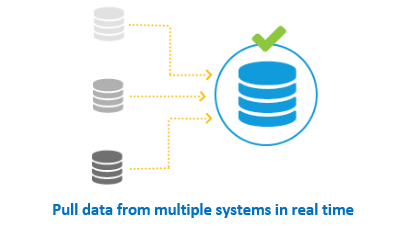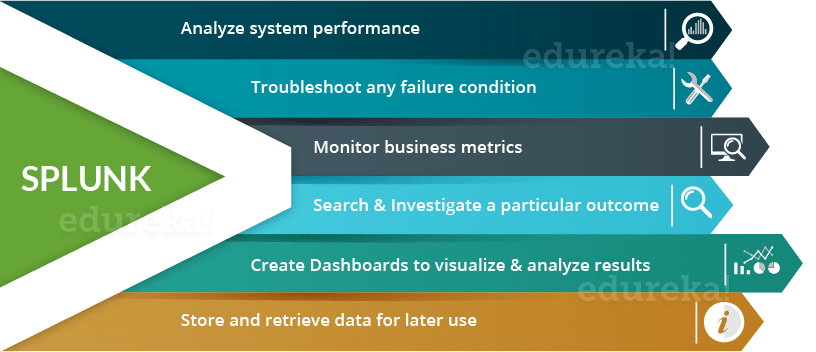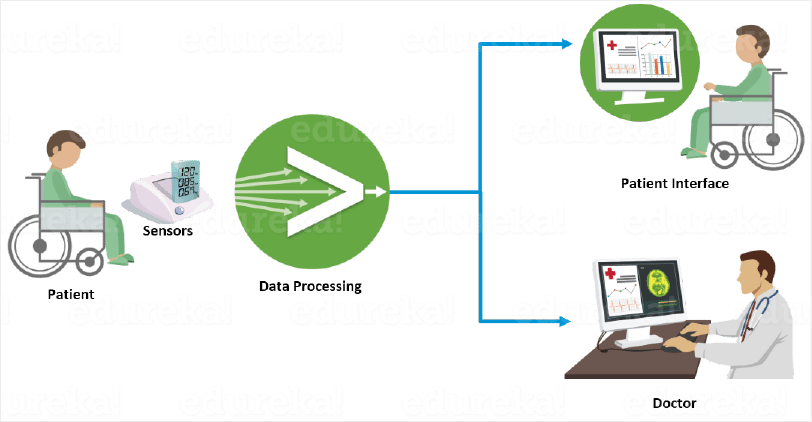PySpark Certification Training Course
- 12k Enrolled Learners
- Weekend/Weekday
- Live Class
You must be aware of the exponential growth in machine data over the last decade. It was partly because of the growing number of machines in the IT infrastructure and partly because of the increased use of IoT devices. This machine data has a lot of valuable information that can drive efficiency, productivity and visibility for the business. Splunk was founded in 2003 for one purpose: To Make Sense Of Machine Generated Log Data and since then the demand for Splunk skill is increasing.
In this blog, I have answered two common questions Non-Splunkers ask me:
Look at the below image to get an idea of how machine data looks.
Now imagine if you were a SysAdmin trying to figure out what went wrong in your system’s hardware and you stumble upon logs like the one’s in the above image, what would you possibly do? Would you be able to locate in which step your hardware failed you? There is a remote chance that you might be able to figure it out, but even that is only after spending hours in understanding what each word means. To tell you in a nutshell, machine data is:
This is where a tool like Splunk comes in handy. You can feed the machine data to Splunk, which will do the dirty work(data processing) for you. Once it processes and extracts the relevant data, you will be able to easily locate where and what the problems were.
Splunk started off this way, but it became more prominent with the onset of Big Data. Since Splunk can store and process large amounts of data, data analysts like myself started feeding big data to Splunk for analysis. Dashboards meant for visualization was a revelation and within no time Splunk was extensively used in the big data domain for analytics. Learn more about Big Data and its applications from the Microsoft Certified Azure Data Engineer Associate Course
Splunk is a software platform to search, analyze and visualize the machine-generated data gathered from the websites, applications, sensors, devices etc. which make up your IT infrastructure and business.
If you have a machine which is generating data continuously and you want to analyze the machine state in real time, then how will you do it? Can you do it with the help of Splunk? Yes! You can. The image below will help you relate to how Splunk collects data.

Real time processing is Splunk’s biggest selling point because, we have seen storage devices get better and better over the years, we have seen processors become more efficient with every ageing day, but not data movement. This technique has not improved and this is the bottleneck in most of the processes within organizations.
If you already think Splunk is an awesome tool, then hear me out when I say that this is just the tip of the iceberg. You can be rest assured that the remainder of this blog post will keep you glued to your seat if you have an intention to provide your business the best solution, be it for system monitoring or for data analysis.
You can even check out the details of Big Data with the Azure Data Engineering Certification in Washington.
The other benefits with implementing Splunk are:
For those of you who don’t know what is a knowledge object, it is a user-defined entity using which you can enrich your existing data by extracting some valuable information. These Knowledge objects can be saved searches, event types, lookups, reports, alerts or many more which helps in setting up intelligence to your systems.
The infographic below mentions some of the functionalities for which Splunk can be used.

To give you more clarity on how Splunk works, I am going to tell you how Bosch used Splunk for data analytics. They collected the healthcare data from the remotely located patients using IoT devices(sensors). Splunk would process this data and any abnormal activity would be reported to the doctor and patient via the patient interface. Splunk helped them achieve the following:

I urge you to see this Splunk video tutorial that explains the basics of Splunk, how it works, working architecture and much more. Go ahead, enjoy the video and tell me what you think.
What is Splunk | Splunk Tutorial for Beginners | Edureka
This Splunk tutorial will help you understand what is Splunk, benefits of using Splunk, Splunk vs ELK vs Sumo Logic, Splunk architecture – Splunk Forwarder, Indexer and Search Head with the help of Dominos use case.
Now that you have an understanding of what is Splunk and its relevance in the Big Data industry, learn Splunk and build a career in the analytics domain. Check out our Splunk certification training here, which comes with instructor-led live training and real-life project experience.
To know how Splunk fares against ELK and SumoLogic, please read our next blog on Splunk vs. ELK vs. SumoLogic.
 Thank you for registering Join Edureka Meetup community for 100+ Free Webinars each month JOIN MEETUP GROUP
Thank you for registering Join Edureka Meetup community for 100+ Free Webinars each month JOIN MEETUP GROUPedureka.co
You can find user reviews for Splunk and how they compare to other SIEM solutions
As an example, users interested in Splunk also read reviews on LogRhythm NextGen SIEM. This Security Engineer writes, “The Web Console is my favorite. It enables me, at a glance, to see the health of the environments. That is really important to me.
Hi Vardhan , this is great write up to understand Splunk overview for beginners. helped me! I have experience in splunk now and captured some of the search crieteria’s I use regularly. Just wanted to share, so it will be helpful for others.
Hi Vardhan , I just started using splunk with one of my team member, Will doing that i want to connect my java application with splunk by passing the json out of my java application as a input to the splunk, i have the splunk token with me , but was not able to make the connection. help with the code if possible some guidance will be really helpfull
Please give more details about the Token. What is it and where did you get it?
If you have a JSON file which needs to be Splunk-ed, then you can straight away drag and drop it onto your Splunk Admin Dashboard which comes up when you install Splunk.
Or else, if its a remote server, then install a Splunk Forwarder on the server and forward the JSON/ Log file to Splunk cluster.
Hope this helps :)